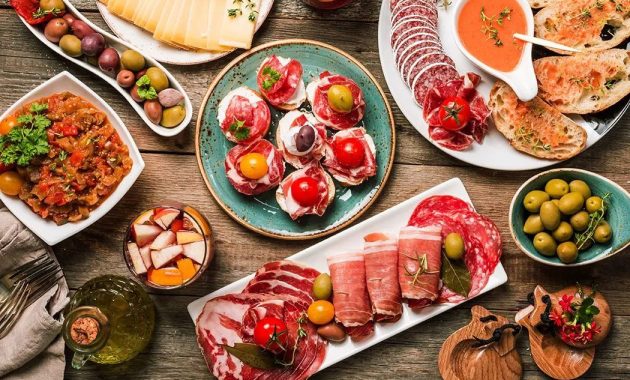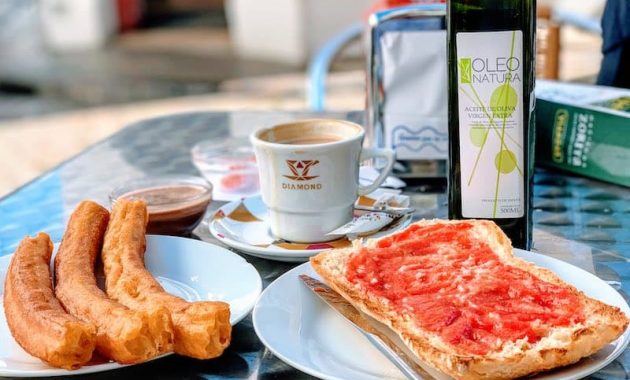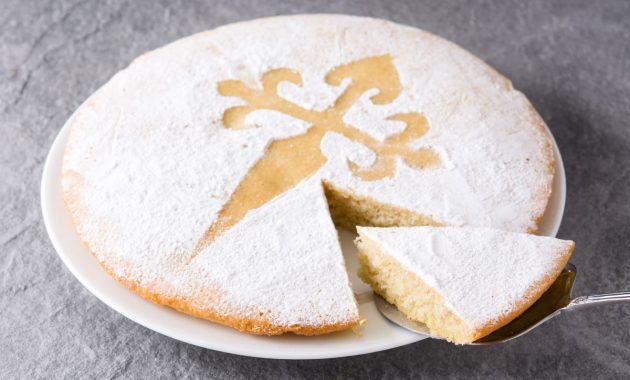
A Taste of Spain’s Heart and Soul
The moment you step into Spain, the aroma of sizzling olive oil, grilled seafood, and freshly baked bread fills the air — a sensory invitation to a country where food is more than sustenance; it’s a celebration of life. From the lively tapas bars of Madrid to the seafood paellas along Valencia’s coast, Spain’s cuisine is as diverse as its landscapes. In this Spanish Food Guide, we’ll journey through Spain’s culinary treasures — exploring iconic dishes, regional specialties, and local dining customs that define Spanish culture. Whether you’re a passionate foodie or a curious traveler, this guide will help you eat your way through Spain like a local.
Tapas Culture: Small Plates, Big Stories
Eating tapas is not just a meal — it’s a social ritual. In cities like Granada or Seville, locals gather in crowded bars to enjoy small plates over laughter and conversation. You might start with patatas bravas (crispy potatoes in spicy tomato sauce) or gambas al ajillo (garlic shrimp), then move on to jamón ibérico — Spain’s prized cured ham, sliced paper-thin and bursting with flavor.
Travel Tip: In Granada, many bars still serve a free tapa with each drink — a delicious tradition that every traveler should experience.
The Spanish Breakfast: Simplicity at Its Best

Morning in Spain starts slowly, often with café con leche (coffee with milk) and a sweet or savory bite. Locals love tostada con tomate — toasted bread rubbed with fresh tomato, olive oil, and salt. Pair it with orange juice, and you’re ready to start your day like a true Spaniard.
In Madrid, churros dipped in thick, rich hot chocolate make for a comforting treat — especially on chilly mornings.
Midday Feasts: The Art of the Siesta Lunch
Lunch (la comida) is the heart of the Spanish day, often lasting two hours and followed by a siesta. It’s the biggest meal, usually including several courses — a starter (like gazpacho or salad), a main dish (seafood, meat, or rice), and dessert.
Valencia’s paella reigns supreme — a saffron-infused rice dish cooked with seafood, chicken, or rabbit. In coastal towns, you’ll find fideuà, a noodle-based cousin of paella that’s equally delicious.
Regional Specialties: Culinary Diversity Across Spain
Each region has its own personality — and its own cuisine.
- Andalusia: The home of gazpacho and salmorejo, two refreshing cold tomato soups perfect for summer.
- Basque Country: Try pintxos — bite-sized delights served on skewers, often with creative toppings. San Sebastián is considered a food lover’s paradise.
- Catalonia: Indulge in crema catalana, Spain’s answer to crème brûlée, and escudella i carn d’olla, a hearty Catalan stew.
- Galicia: Famous for pulpo a la gallega (Galician-style octopus) and fresh shellfish from the Atlantic coast.
- Castile and León: Known for lechazo asado (roast lamb) and rustic countryside fare.
Sweet Endings: Spanish Desserts to Savor

Desserts in Spain range from simple to divine. Tarta de Santiago, an almond cake from Galicia, is a must-try, as are flan and arroz con leche (creamy rice pudding). During holidays, turrón (nougat candy) and roscones de reyes (King’s Day pastry) fill bakeries across the country.
Don’t forget churros con chocolate — whether for breakfast or a midnight snack, they never disappoint.
Drinks to Complete the Experience
No Spanish meal is complete without a drink in hand. Try sangría — a fruity wine punch — or tinto de verano, a lighter, refreshing alternative. In the Basque Country, txakoli (slightly sparkling white wine) is a regional favorite. And if you’re visiting Jerez, sip on authentic sherry, Spain’s iconic fortified wine.
Coffee is taken seriously too — from quick espresso shots to leisurely café breaks.
Dining Etiquette: Eat Like a Local
Spaniards eat late. Lunch begins around 2 PM, dinner often after 9 PM. Don’t rush your meals — savor them slowly, as locals do. Splitting bills isn’t always common; instead, people take turns paying.
Insider Tip: When eating tapas, don’t expect table service in every bar. Many locals stand at the counter, chatting and ordering small plates one at a time.
FAQs About Spanish Food Guide
Spanish Food Guide : What is Spain’s national dish?
Paella, originally from Valencia, is often considered Spain’s national dish.
Are tapas free everywhere in Spain?
No — some cities like Granada or León still serve free tapas, but in most others, they’re paid separately.
What time do Spaniards usually eat?
Breakfast: 8–10 AM; Lunch: 2–4 PM; Dinner: 9–11 PM.
Can vegetarians find options in Spain?
Yes! Many dishes like tortilla española (Spanish omelet), pisto (vegetable stew), and gazpacho are vegetarian-friendly.
Is tipping expected in Spain?
It’s appreciated but not mandatory — 5–10% in restaurants is enough.
What drink pairs well with paella?
A crisp white wine like Albariño or a light red Rioja complements it perfectly.
What is the difference between tapas and pintxos?
Tapas are small plates; pintxos (Basque style) are served on bread with a toothpick.
Where can I find the best seafood in Spain?
Head to Galicia or the coastal areas of Andalusia and Valencia.
What’s a typical Spanish dessert?
Flan, crema catalana, and tarta de Santiago are popular choices.
What’s the difference between jamón serrano and jamón ibérico?
Jamón ibérico comes from special black Iberian pigs and is more expensive and flavorful.
Do restaurants in Spain close in the afternoon?
Yes, many close between 4–7 PM — plan your meals accordingly.
Is street food safe in Spain?
Absolutely! Street food and market stalls are generally safe and delicious.
Verdict: Spain’s Cuisine — A Journey for Every Palate
From vibrant tapas bars to seaside seafood feasts, Spain’s cuisine reflects its warmth, diversity, and passion for life. Every meal tells a story — of tradition, region, and community. Whether you’re sipping wine under a sunset in Andalusia or sharing pintxos in San Sebastián, Spanish food connects travelers to the country’s heart in the most delicious way possible.
So come hungry, explore boldly, and let your Spanish journey unfold — one bite at a time.